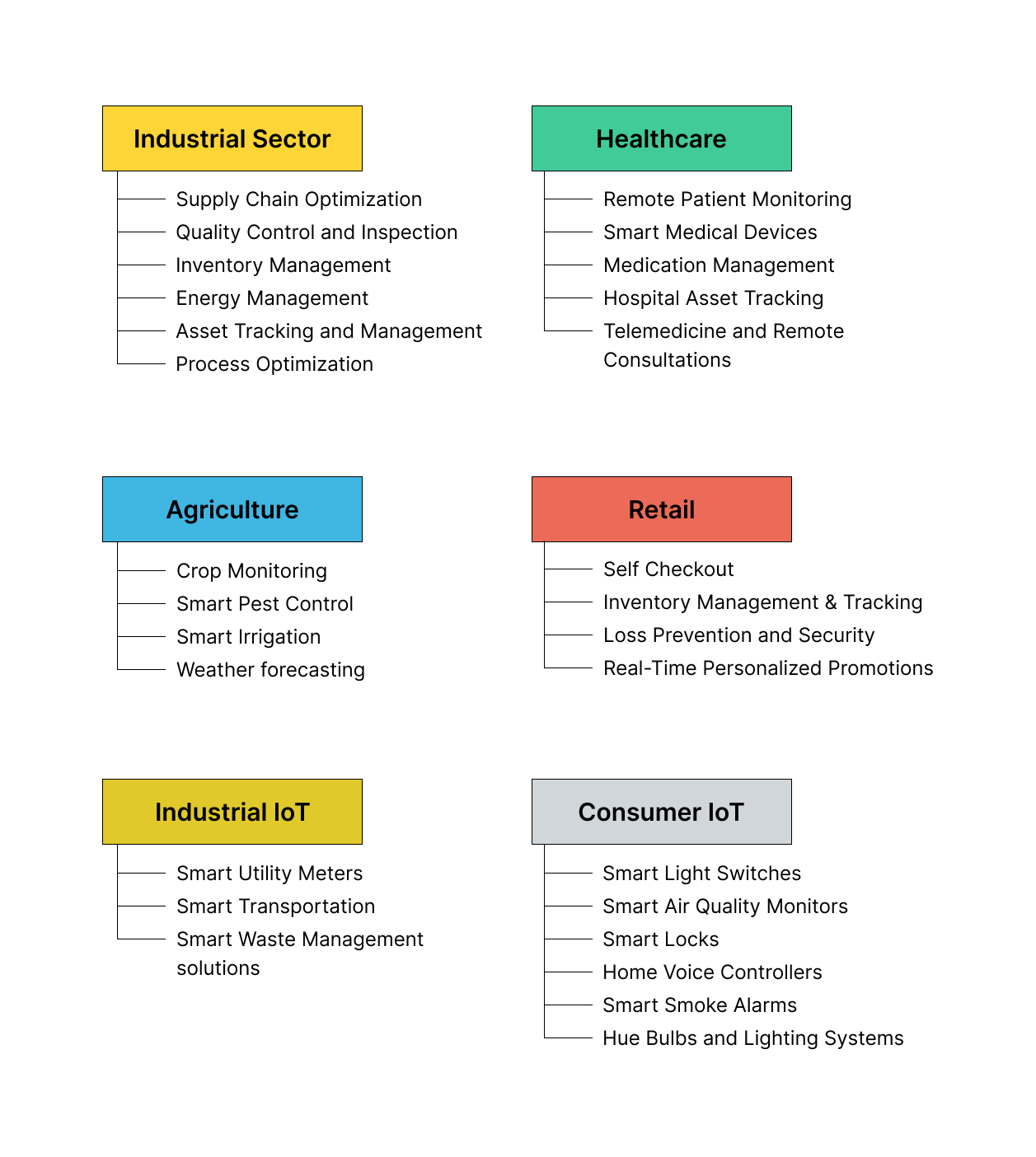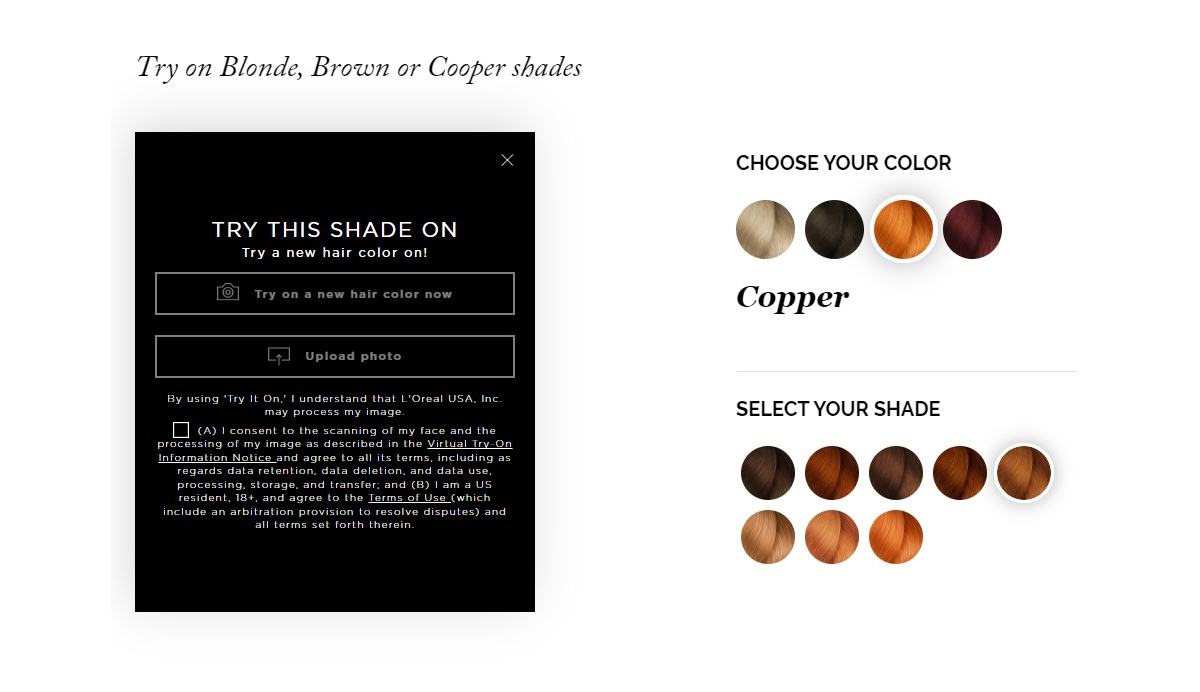8 trends that will affect mobile app development
When the iPhone launched in 2007, Steve Jobs famously proclaimed that web apps were the future and Safari would be the portal. In March 2008, Apple changed their minds and introduced a software development kit (SDK) and the App Store storefront where developers could sell their software. This was a defining moment that instantly made apps mainstream.
The number of app downloads steadily increased between 2016 and 2022. However, in 2023, global app downloads stagnated, reaching 257 billion, with only a one percent year-over-year increase. So, do we already have everything we hoped for, or is there room for some innovative trends that will affect mobile app development in the coming years?
Top 8 trends that will affect mobile app development
1. Internet of Things (IoT)
The Internet of Things, or IoT, refers to a network of internet-connected objects capable of collecting and exchanging data. It involves objects or devices that can sense, gather data, and communicate over the internet. Imagine a "Smart refrigerator" in your home connected to the internet. This refrigerator is equipped with sensors that monitor its contents and temperature.
Now, suppose you're at the grocery store and want to check if you need to buy milk. Using an app on your smartphone (another "thing" connected to the internet), you can remotely access the refrigerator's data to see if you're running low on milk. If needed, you can even add milk to your shopping list directly from your phone. This scenario demonstrates how IoT enables you to remotely monitor and interact with devices in your home from anywhere in the world, as long as they're connected to the internet.

The integration of IoT tech with mobile apps is a big trend with great potential for changing how we use technology. Around 15 billion devices are connected to the IoT, which is projected to surpass 29 billion by 2030.
.png?width=2000&height=1476&name=Untitled%20(4).png)
As our lives become more connected and tech improves, combining devices and apps will lead to new ways of doing things. By solving problems and focusing on users' needs, app developers can create apps that use IoT to make life easier and better. We're just getting started, and there's a world of possibilities ahead.
2. Artificial Intelligence (AI) and Voice Assistants
Since 2017, the mobile industry has been focusing on artificial intelligence (AI), highlighted by Apple's integration of the Siri voice assistant into applications. This pivotal move spurred the infusion of AI and machine learning algorithms into various application domains.

The trajectory of mobile app trends is poised for a transformative shift towards AI-powered user experiences. Intelligent and context-aware applications are expected to:
- Recognize user emotions and adapt accordingly
- Generate personalized content tailored to individual users
- Provide real-time analytics for enhanced decision-making
- Ensure robust online payment security measures
To thrive amidst intense competition, mobile app developers must stay ahead of this dynamic trend by embracing the forthcoming wave of AI-driven advancements in user experiences and content generation. In 2024, AI integration in mobile apps is set to expand beyond virtual assistants, photo editors, and chatbots, emerging as a key trend for CIOs and CTOs to watch.
AI-powered mobile apps on the horizon include:
- Translators
- Face recognition
- Adaptive battery management
What are the benefits of AI in mobile app development?
AI offers several benefits for mobile app development:
- Streamlined development process: With AI, mobile app development can become seamless. Given data from past development processes, AI can create mobile apps without explicit instructions and address issues in real-time.
- Behavior imitation: AI can mimic user behavior based on provided patterns. For instance, Amazon employs machine learning to curate personalized recommendations based on users' purchase history, enhancing the user experience.
3. Augmented reality (AR) and Virtual Reality (VR)
Augmented Reality (AR) and Virtual Reality (VR) are technologies that blend virtual elements with real-world environments to offer immersive experiences. A prime example of AR/VR's impact is seen in the widespread popularity of Pokémon Go, a game that overlays virtual creatures onto real-world settings. Beyond gaming, AR/VR technology is revolutionizing various fields such as design, marketing, and shopping.
Emerging trends in the industry include:
- Metaverse
- AR glasses
- Autonomous vehicles with AR/VR capabilities
- Advancements in display technologies
- Remote assistance
- AR-based navigation.
Real-life applications
Leading apps like Google Maps, Snapchat, IKEA Place, Yelp, and Quiver utilize AR/VR to provide innovative user experiences. Another interesting example is L'Oreal Paris, which employs AR in its Style My Hair app, allowing users to virtually try different hairstyles and makeup looks.

Google Maps' "Live View" feature uses AR to provide real-time turn-by-turn directions by overlaying navigation cues onto real-world imagery. AR also finds applications in workforce training programs and content creation, offering creative opportunities for enhancing user experiences. Similarly, VR technology is reshaping mobile gaming experiences by connecting with smartphones, apps, and wearables.
4. 5G
Mobile data usage is increasing as we continue to use our apps on the move more and more.
5G is much faster than 4G, up to 100 times faster in some cases. This will improve mobile apps and allow developers to add new features without slowing them down.

However, along with these benefits, the widespread adoption of 5G raises valid concerns regarding security and privacy. The heightened connectivity and data-sharing capabilities necessitate robust encryption, authentication, and regulatory measures to safeguard personal information and critical infrastructure.
5. Instant apps
Instant apps are gaining traction in mobile app development, offering a promising future for marketing endeavors. These apps provide a glimpse of the experience without requiring any information sharing or downloads. Users can access basic functions without consuming memory or causing system interruptions.
Benefits of instant app development include:
- Simplified development process
- Reduced resource requirements
- Provides an opportunity to enhance user experience
- Immediate feedback
- Saves the search time
- Particularly beneficial for eCommerce and gaming sectors, serving as effective marketing tools.

Android instant apps find various applications across industries, including:
- Ecommerce: Product pages and checkout processes.
- Gaming: Tutorial and introductory pages for Google Play games.
- Entertainment: Video players and interaction through messaging apps.
6. Cyber security
Prioritizing mobile app security is essential to create a safer digital environment, ensuring users can enjoy the benefits of mobile technology without compromising their privacy and security.
Mobile devices have experienced a 54% surge in malicious attacks, with over 60% of fraud originating from mobile platforms. Mobile apps account for 80% of this fraudulent activity.
No wonder users are increasingly cautious about sharing sensitive data, prompting the adoption of features like "Sign in With Apple" to streamline authentication processes securely. This feature allows users to sign in to apps using their Apple ID, eliminating the need to manually input personal information. With two-factor authentication and privacy assurances from Apple, it enhances user trust and mitigates security risks.

Additionally, as mobile apps become integral to everyday tasks, including finance and shopping, developers are implementing encryption, verified backends, and secure payment gateways to safeguard user data. Key trends in mobile security include Security-as-a-Service, AI integration in cybersecurity, and Mobile RASP (Runtime Application Self-Protection), reflecting the evolving landscape of app security to counter emerging threats.
Using Blockchain technology to improve security
Blockchain technology is integrated into mobile apps to enhance security, transparency, and decentralization.
- Secure data storage: Blockchain provides a decentralized and secure method for storing sensitive user data. Distributing data across the network instead of relying on a central server minimizes the risk of a single point of failure.
- Identity verification: Blockchain facilitates secure identity verification, allowing users to control access to their personal information. This is particularly useful in applications requiring user authentication while safeguarding privacy.
- Smart contracts: Mobile apps can implement self-executing contracts using blockchain technology. These smart contracts automate and enforce agreements, enhancing trust and reducing the need for intermediaries.
- Cryptocurrency transactions: Blockchain technology underpins cryptocurrencies like Bitcoin and Ethereum. Mobile apps leverage blockchain for secure and transparent peer-to-peer transactions, improving payment efficiency and reducing fraud risks.

7. Apps for foldable devices
Foldable devices (Samsung Galaxy Z Fold, Z Flip, Moto Razr, Pixel Fold) are emerging as a significant trend in mobile app development, offering a unique design combining portability with expanded screen real estate. These devices can be unfolded to provide a larger screen experience and the ability to run multiple apps simultaneously.
As they are becoming more popular, developers face the challenge of optimizing apps for foldable UIs to deliver an enhanced user experience:
- Accounting for two screen resolutions (folded and unfolded) during app development.
- Designing for one-handed use when folded and accommodating two-handed use when unfolded.
- Leveraging the larger screen space to incorporate multi-screen functionalities.
- Ensuring a seamless transition between folded and unfolded states for a seamless user experience.
Although foldable devices represent a small portion of the smartphone market, their prevalence is expected to increase in the coming years.

The larger screen size offered by foldable devices presents opportunities for:
- Enhanced immersive experiences with detailed content
- Multi-tasking capabilities through multi-window support
- Optimizing video streaming and gaming apps to leverage the expanded screen space for additional features and controls
8. Motion design
Motion design stands out as a highly sought-after trend in mobile app development. It revolves around utilizing motion animations and transitions to elevate a mobile app's visual aesthetics and overall user experience. As a UX design technique, it’s a key to making mobile apps captivating and distinctive.
Anticipated trends in motion design include:
- Hyper-realism and 3D visuals
- Disruptive retro aesthetics
- Mixed media incorporating elements of photography, graphics, and text
- Realistic transitions and character animations
- Incorporation of squishy and textured objects
- Experimental minimalism in design approach
- Creation of immersive experiences for users
As a result, doubling down on motion designs is projected to emerge as a potent creative tool for advertising and marketing in the forthcoming years. Motion designs significantly contribute to crafting standout and user-centric mobile apps, whether through subtle in-app animations or more elaborate transitions.
How will mobile app development be affected?
Whether you are developing a new app or maintaining an existing one, mobile app development will continue to be a complex challenge.
1. Security concerns
As we mentioned above, security remains a pressing issue in mobile app development. A concerning statistic from Gartner indicates that 75% of mobile apps fail basic security tests. Given the increasing volume of personal data stored within apps, the repercussions of a data breach or leak are significant, both in terms of financial cost and reputational damage. Common vulnerabilities include weak server-side controls and inadequate transport layer protection.
2. Compatibility across devices
Ensuring compatibility with many devices and platforms poses a significant challenge for mobile app developers, particularly with the proliferation of IoT and smart devices. This diversity inevitably increases the likelihood of compatibility issues arising, underscoring the importance of comprehensive automated, functional, and exploratory testing.
3. Ongoing maintenance and updates
Sustaining the success of mobile apps necessitates continuous maintenance and regular updates. The complexity of app functionality directly correlates with the level of development and testing required to ensure seamless performance over time.
4. Meeting user expectations
Consumers expect mobile apps to offer intuitive, fast, and feature-rich experiences that surpass the capabilities of traditional websites. Failure to meet these expectations can result in poor user ratings and high deletion rates, emphasizing the importance of delivering exceptional user experiences to maintain user engagement and satisfaction.
Conclusion
Mobile apps have transformed our smartphones from being useful to indispensable. The new technology that will affect apps will bring enhancement to consumers but, on the whole, more challenges for developers. However, it will also bring opportunities as new apps are needed.
As mobile app development increases, so will the importance of mobile app testing. It's vital you maximize your budget by exploring all testing options, including crowdsourced testing.
How can Global App Testing help with the extra testing
We understand that releasing high-quality mobile apps quickly is complicated, but you shouldn't have to sacrifice quality for speed—or vice versa.
Benefits of GAT's advanced targeting:
- Comprehensive user representation: Gain insights into diverse user demographics by testing on old or non-western devices, ensuring a more inclusive understanding of users.
- Enhanced connectivity testing: Assess software performance in real-world scenarios, including low connectivity and data conditions, to ensure optimal functionality for users.
- Global coverage: Your product's performance will be safeguarded in over 190 countries and territories, ensuring consistency across diverse geographical regions.
- Secure payment integration: Guarantee seamless integration with crucial payment gateways by testing payment processes with real cash transfers.
- Compatibility assurance: Ensure high performance and functionality across various platforms and user setups by testing across different operating systems, browsers, and versions.
- Integration testing: Validate the functionality of interconnected systems for a seamless user experience through tests that run through integrations with partner products.
Schedule a call today and see how we can help you launch a stable, bug-free, and user-friendly mobile app!
We can help you develop a functional and reliable mobile app aligned with your goals
FAQ
What are the current trends in mobile app development?
Mobile app development trends change frequently, but some prevalent ones include AI and machine learning integration, augmented reality (AR) and virtual reality (VR) experiences, Internet of Things (IoT) integration, 5G technology adoption, blockchain implementation, and focus on user privacy and security.
How are AR and VR influencing mobile app development?
AR and VR technologies are transforming how users interact with mobile apps by providing immersive experiences. Developers leverage AR and VR for gaming, education, retail, and enterprise applications to create engaging and interactive environments.
What is the significance of IoT in mobile app development?
IoT integration in mobile apps enables devices to communicate and share data, creating smart and connected ecosystems. This trend is prominent in healthcare, smart home automation, transportation, and industrial automation.
How does 5G technology impact mobile app development?
5G technology offers faster data speeds, lower latency, and increased network capacity compared to previous generations. Mobile apps can leverage these capabilities to deliver high-quality streaming, real-time gaming, augmented reality experiences, and seamless connectivity in IoT devices.
Keep learning
11 Mobile testing trends you need to know about
The 8 best web app development software products, according to our editors
AI testing - everything you need to knot

